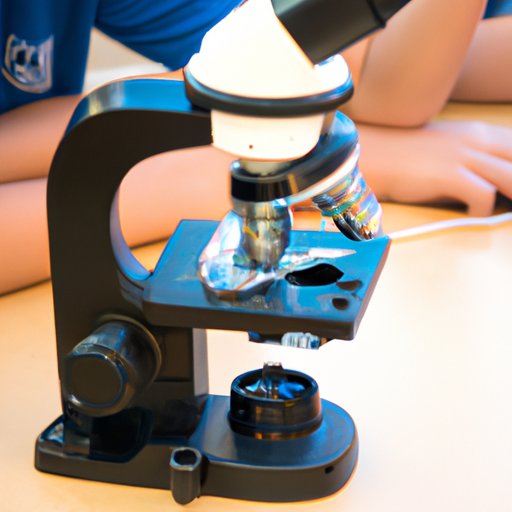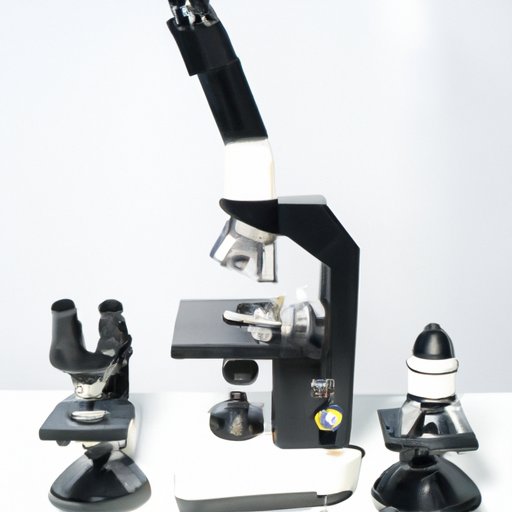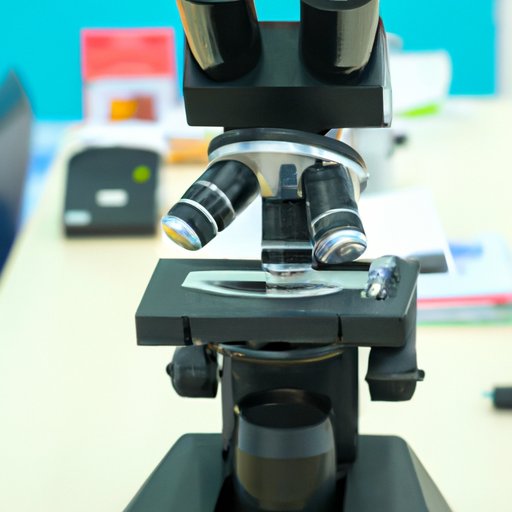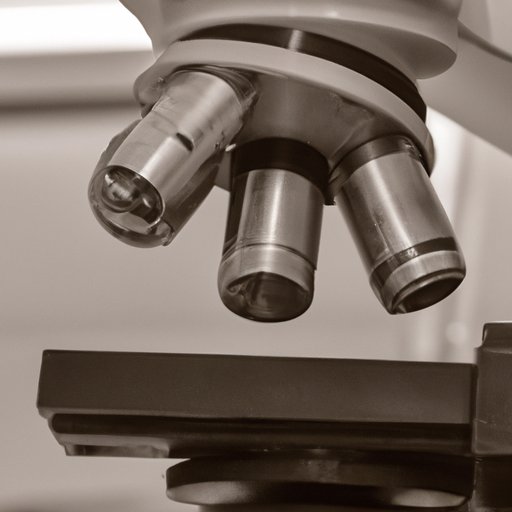Introduction
A microscope has become an integral part of scientific research and discovery. Scientists use microscopes to observe and analyze specimens that are too small to be seen with the naked eye. This article will explore the different types of microscopes used in science, how they work, and their benefits.

Exploring the Wonders of Microscopes in Science
A microscope is a tool used to magnify objects that are too small to be seen by the human eye. It uses a combination of lenses and optics to increase the size of the object and make it visible. The most common type of microscope is the light microscope, which uses visible light or ultraviolet light to illuminate the sample.
The first microscope was invented in 1590 by Dutch eyeglass maker Zacharias Janssen. Since then, microscopes have been used to observe and analyze cells, bacteria, viruses, and other organisms. In the 19th century, scientists developed more powerful microscopes that allowed them to observe even smaller objects.

The Different Types of Microscopes Used in Science
Light microscopes are the most common type of microscope used in science. They use visible light or ultraviolet light to illuminate the sample. Light microscopes can magnify up to 1000x, providing a clear view of the sample.
Electron microscopes use a beam of electrons instead of light to magnify samples. These microscopes can provide images with a resolution up to 0.2 nanometers, making them ideal for observing extremely small particles such as viruses.
Scanning probe microscopes use a sharp tip to scan the surface of a sample at atomic level. These microscopes can provide detailed images of the sample’s surface and are used to study the structure and composition of materials.

How Microscopes Enhance Scientific Discoveries
Microscopes allow scientists to observe samples at higher levels of magnification than ever before. By increasing the magnification power, scientists can observe even the smallest details of a sample. Microscopes also improve image quality, allowing scientists to get a clearer view of the sample.
In addition, microscopes provide scientists with a variety of visualization options. For example, light microscopes can be used to observe color, while electron microscopes can be used to observe three-dimensional structures.
The Benefits of Using a Microscope in Science
The use of microscopes in science has numerous benefits. Microscopes allow scientists to gain a greater understanding of biological processes. For example, scientists can observe the structure of cells and observe how they interact with each other.
Using a microscope also allows scientists to make more accurate measurements. This is especially important when studying tiny organisms that require precise measurements. Finally, microscopes enable scientists to make more detailed observations, allowing them to identify features that may otherwise go unnoticed.
A Guide to Utilizing Microscopes in Scientific Research
When using a microscope in scientific research, it is important to choose the right microscope for the job. Depending on the type of research being conducted, different types of microscopes may be needed. For example, if you are studying viruses, an electron microscope may be the best choice.
It is also important to prepare samples for observation. This involves cleaning and sterilizing the sample, as well as preparing a slide for viewing. Once the sample is prepared, it can be placed under the microscope for observation.
Finally, it is important to analyze and interpret the data from the microscope. This involves looking for patterns and identifying any abnormalities. This data can then be used to draw conclusions about the sample being observed.
Conclusion
Microscopes play an essential role in scientific research and discovery. They allow scientists to observe objects that are too small to be seen with the naked eye, as well as make more accurate measurements and detailed observations. When used properly, microscopes can greatly enhance the understanding of biological processes and lead to new scientific discoveries.
(Note: Is this article not meeting your expectations? Do you have knowledge or insights to share? Unlock new opportunities and expand your reach by joining our authors team. Click Registration to join us and share your expertise with our readers.)
